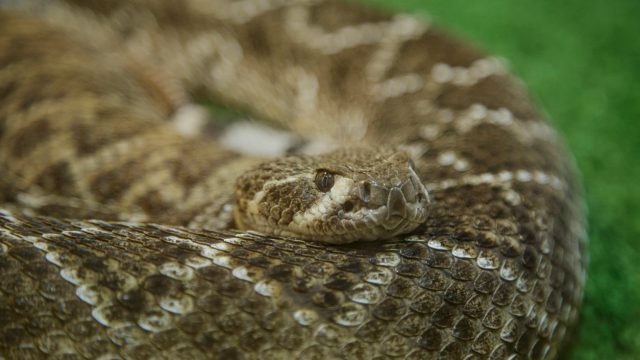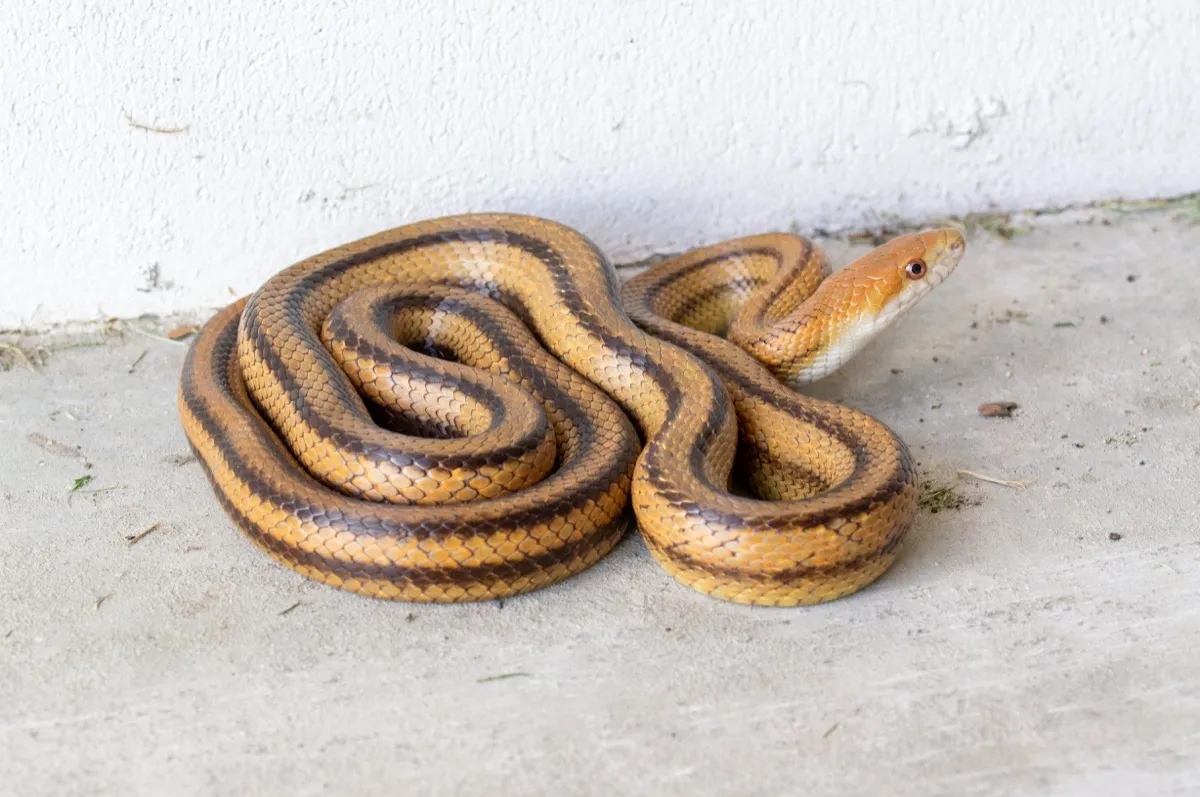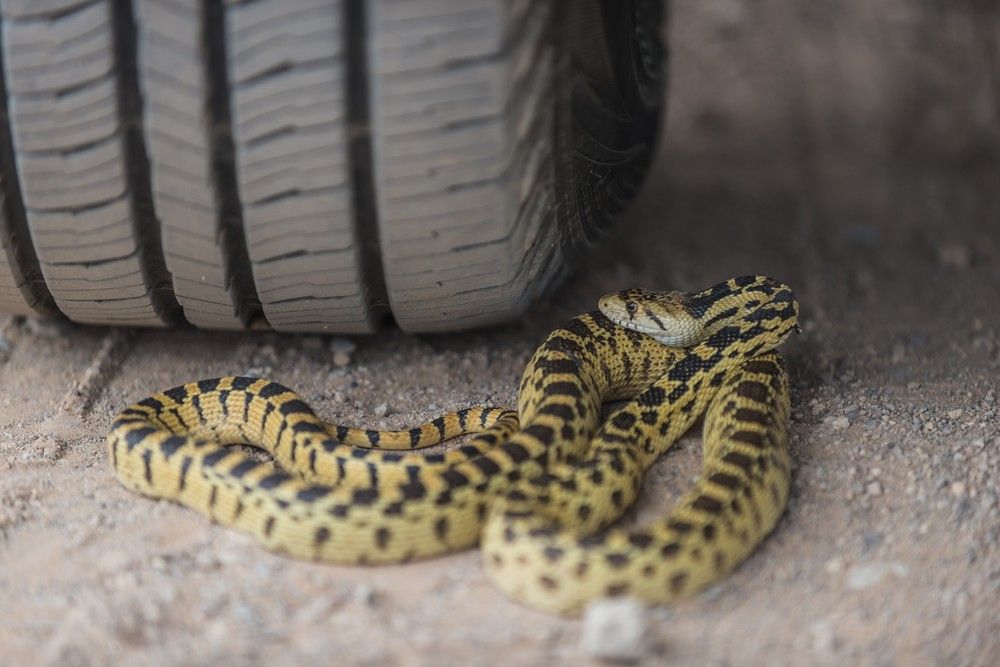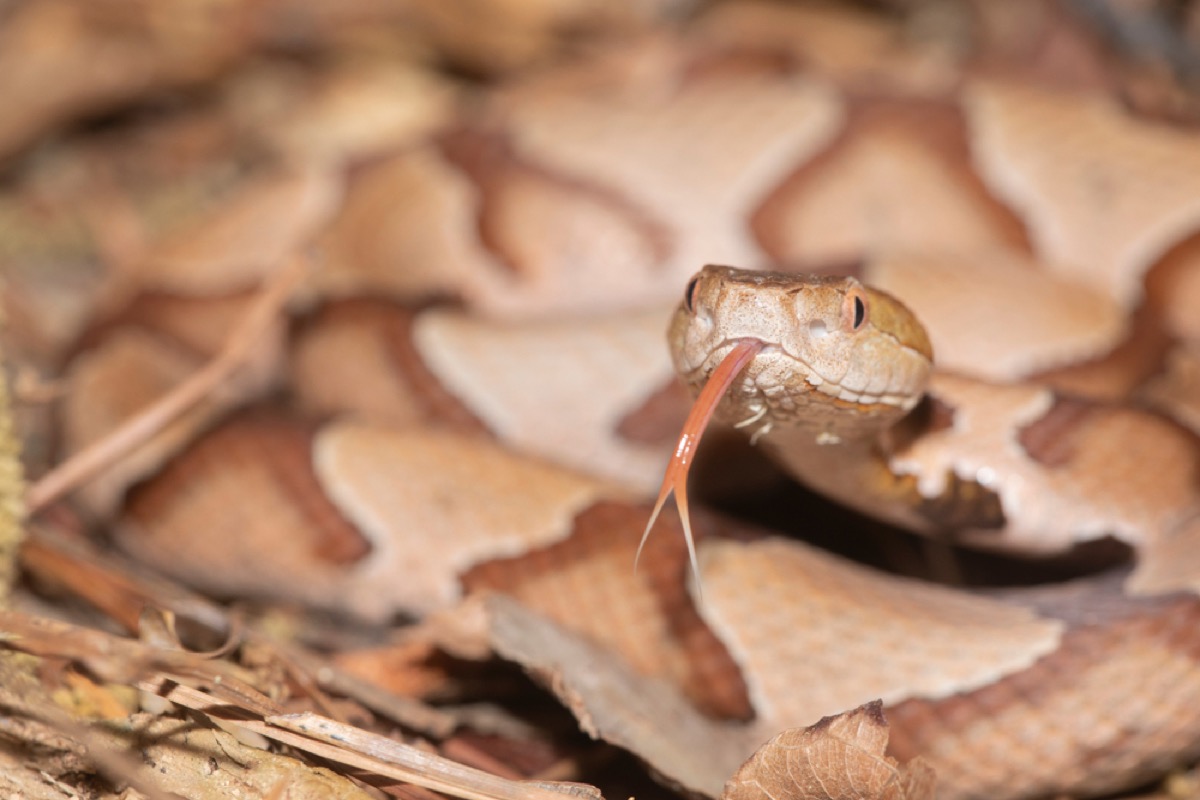The No. 1 Place Snakes Love to Hide in Your Garage

Much like attics and basements, garages tend to accumulate a lot of items over time. But besides unused patio furniture, your tool collection, and ski equipment you haven’t found time to use in years, it’s also a relatively easy place for pests and other animals to invade from the outside. And according to experts, there’s one particular place where snakes love to hide when they make their way into your garage. Read on to see which areas should be on your radar.
READ THIS NEXT: If You Live Here, Watch Out for This Venomous Snake in Your Backyard.
Snakes can leave behind hints that they’re hiding out before you ever see one.

As the only room in the house with a massive opening that makes it semi-outside, your garage provides plenty of opportunities for reptiles to sneak in unnoticed and get comfortable. Fortunately, snakes are timid by nature, and most varieties are perfectly harmless to humans—and are even beneficial to your yard and garden. But there’s a difference between playing a vital role in your lawn’s ecosystem and stowing away amidst your personal belongings or vehicle. And according to experts, you may be able to tell that a snake has made its way into your garage before you even see one.
“Because most snakes move in a very unique and distinct way, it actually makes them a bit easier to identify their trails and where they’ve been traveling,” Burns Blackwell, owner of Terminix Triad in North Carolina, tells Best Life. He advises looking out for a side-winding pattern in the dust the reptiles make as they slither across the ground.
Others point out another dead giveaway that something is slithering nearby. “A common sign that you have a snake infestation is finding snakeskin around your property,” Toby Cahoon from B&T Pest Control tells Best Life. “They shed their skin as they grow, so finding old skin around is a good sign that they’re currently living [nearby].”
Snakes will usually head for one particular type of place when they try to hide in your garage.

As one of the animal kingdom’s best hide-and-seek players, it’s in snakes’ nature to head where they’re least likely to be disturbed. Experts say this is why your designated parking structure can be so inviting in the first place.
“Snakes are attracted to the warm, dark, and secluded areas that your garage provides,” Zac Brown from Clancy Bros Pest Control tells Best Life. “One of their favorite places for snakes to hide in your garage include behind boxes or other stored items,” including objects like empty storage containers or unused appliances like grills, unplugged refrigerators, and more. They’re also likely to hide “under cars and in cracks and crevices in the walls or floor,” Brown says.
Besides ways to control their temperature, the reptiles seek solitude—and are usually very good at locating the spots where they can mostly stay out of the way. “Snakes are often more scared of people than we are of them, so they’re going to try to hide in areas where human or animal foot traffic is uncommon,” Kent D. Edmunds from Paul’s Termite & Pest Control in Florida tells Best Life. “In garages, areas like this typically include corners along the walls, behind pipes, under shelving, or under piles of items where there are layers of protection above them.”
RELATED: For more up-to-date information, sign up for our daily newsletter.
The time of year can also affect where snakes will stash themselves.

But it’s not just any hiding space snakes are after. According to experts, what time of year it is may determine where cold-blooded reptiles head first.
“Where snakes hide is dependent on the season,” Kevin Sherrill from Sherrill Pest Control in Tennessee tells Best Life. “During summer, they’re likely to hide in cool, moist places, which helps them regulate their temperature and provides a water source. In garages, areas like this might be around pipes or under old boxes or furniture that might retain a bit of moisture once they get wet. During cooler months, they’re likely to hide somewhere that provides warmth, such as near a water heater or furnace.”
There are a few ways to ensure snakes stay out of your garage.

If you’re looking to keep your garage a snake-free zone, experts say the easiest starting place is making it more difficult to find a hiding spot by reducing clutter and other unnecessary items. And while sealing up any cracks, crevices, holes, or gaps in walls, windows, and doors will help keep reptiles away, it will also help keep out something else that can attract them.
“If you have bugs or rodents in your garage, finding where they are can you lead you right to snakes! So if you have mice hiding in old furniture or chewing on cardboard, it’s likely snakes will hang out near these areas,” Edmunds says.
And it’s not just messy storage areas that can bring rodents around. “Snakes do not like cat or dog food, but these foods usually attract rodents, and a snake’s primary diet consists of eating mice and rats,” Aqsa Tabassam, a gardener and landscaper with more than ten years of experience, previously told Best Life. “So, leaving out cat and dog food triggers this chain reaction where your garage might be infested by rodents and then snakes, as they look to find food for themselves.”
READ THIS NEXT: Growing This in Your Yard Is Inviting Snakes to Your Home.